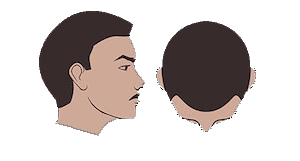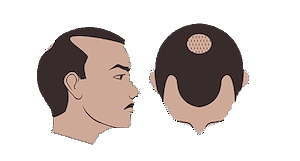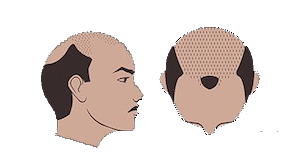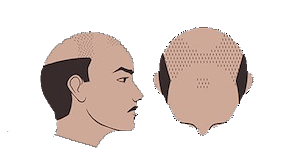Norwood Hamilton Scale Is A Scale Used By Professionals To Measure The Extent Of Male Pattern Baldness
The Norwood Scale
One of the most common forms of hair loss is male pattern baldness, it's also common for some to find it confusing. Hair loss can be so unpredictable it's good to know what stage along the process you are at. Fortunately we have whats called the Norwood scale, a scale that shows the different stages of male pattern hair loss.
Used by many professionals in the industry the Norwood Scale or Norwood Hamilton scale measures the extent of male pattern boldness. This scale is known as the accepted standard when describing hair loss in general. The scale ranges from no balding to completely bald, using a 7 step guide to calculate how far along you are.
The higher a person is on the Norwood scale, the fewer options they have to retain what is left of the hair. For example there is hair loss medication available called Minoxidil or Finasteride and they help in slowing the speed in which people loose hair this method is used at the early stages of the Norwood Scale. From around stage five however, your options decrease and you will need to look into hair restoration treatments such as hair transplants.
There are patterns you can watch out for in male hair loss for example, the most common are; receding at the temples, thinning on the top back part of the head, a general thinning over the entire scalp with a less noticeable change to the hairline, or, a combination of the above.
Here Is How It's Broken Down
We have estimated the number of grafts needed per stage, this will vary slightly for each patient due to individual head size and hair characteristics.
When Should I See A Hair Loss Specialist?
If you have noticed your hair is starting to thin and potentially follow the pattern of the Norwood scale it is best to see a hair loss specialist as early as possible. When you have more hair on the scalp there are more options for you.
At the Hair Loss Clinic, we offer hair transplants that in most cases can be used to restore a natural looking full head of hair for people who are at around stage 4 of the Norwood scale.
We also offer advanced Micro-pigmentation, which uses pigment to add the appearance of fullness to thinning areas of the scalp and can even be used to mimic the appearance of a full head of shaven hair for those at stage the later stages of the Norwood scale.
If you would like more information on our hair restoration treatments please contact us today for a no obligation consultation.
During our consultation process, one of our hair loss experts can discuss the best treatment for your type of hair loss.
Book Your Free Consultation Today
If you would like to discuss the best treatment for you then call us today for a free consultation. Many of our team have experienced hair loss themselves and have had an FUE Hair Transplant. Our customer centric approach will ensure that you will get the very best results.
All consultations take place at our Derby branch where our team of clinicians also offer Low Level Laser Treatment and Scalp Micropigmentation.








